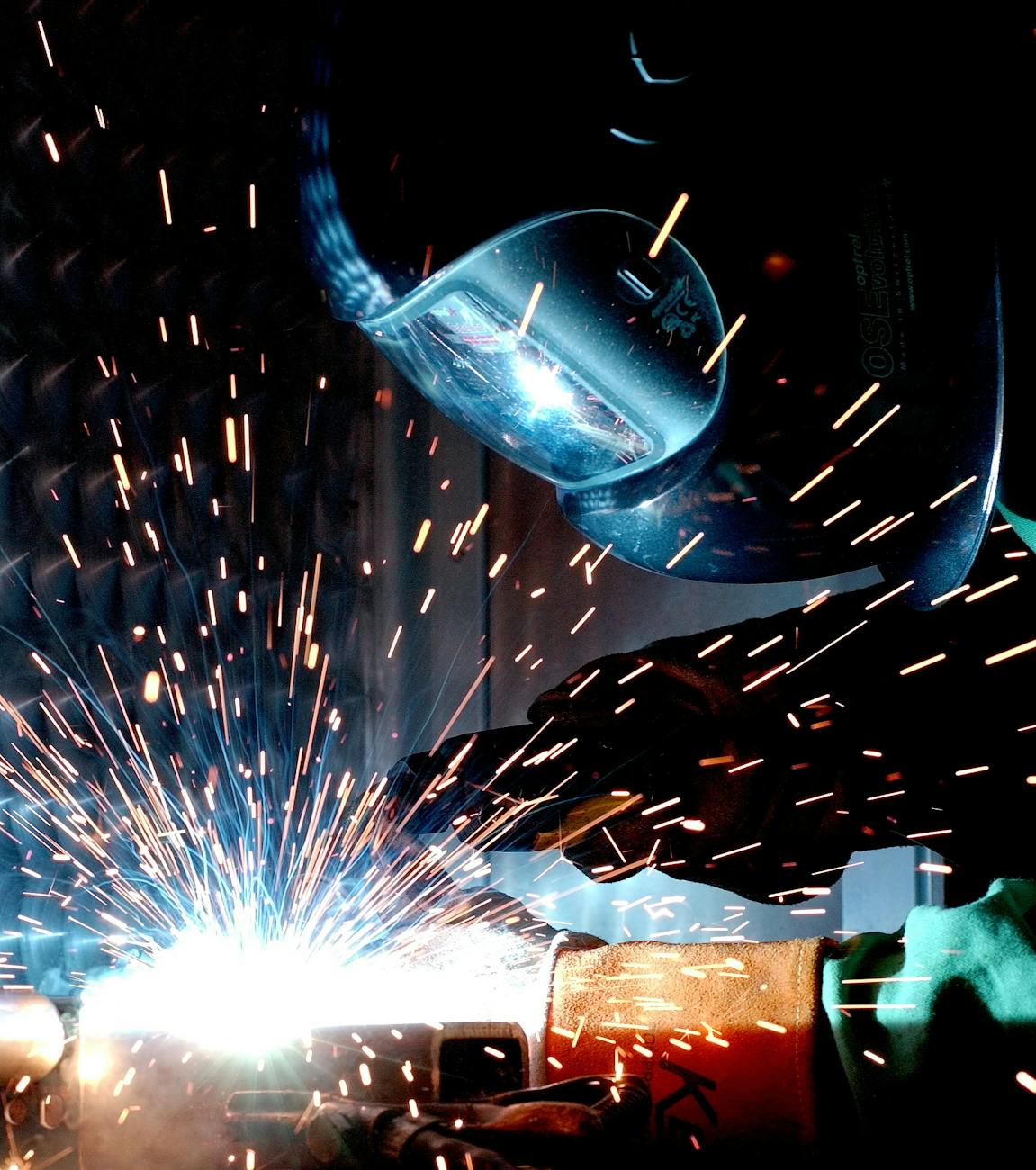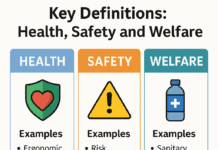
Hot Work Safety Interview: 50 Questions and Sample Answers
1. What is hot work?
Answer: Hot work refers to any activity that produces flames, heat, or sparks, such as welding, cutting, grinding, and brazing.
2. Why is hot work considered hazardous?
Answer: Hot work is hazardous because it can ignite flammable materials, cause burns, or lead to fire and explosion risks.
3. What is a hot work permit?
Answer: A hot work permit is an authorization issued by a safety officer to ensure that proper precautions are taken before performing hot work.
4. What are the main hazards associated with hot work?
Answer: – Fire and explosions
- Toxic fumes
- Burns
- Eye injuries (from sparks and UV radiation)
5. What PPE is required for hot work?
Answer: – Fire-resistant clothing
- Welding helmet or face shield
- Heat-resistant gloves
- Safety boots
6. Who is responsible for issuing a hot work permit?
Answer: A competent safety officer or supervisor is responsible for issuing and verifying compliance with the hot work permit.
7. What are the key steps in a hot work permit procedure?
Answer: – Assess hazards in the area
- Remove or protect flammable materials
- Assign fire watch personnel
- Ensure proper ventilation
8. What is the role of a fire watch during hot work?
Answer: A fire watch monitors the work area for potential fire hazards and remains on standby with firefighting equipment.
9. What is the duration of a fire watch after hot work?
Answer: A fire watch must remain for at least 30-60 minutes after hot work is completed to ensure no delayed fires.
10. Why should hot work be avoided in confined spaces?
Answer: Confined spaces have limited ventilation, increasing the risk of fire, explosion, and toxic gas buildup.
11. How do you determine if an area is safe for hot work?
Answer: – Conduct a risk assessment
- Check for flammable materials
- Ensure ventilation is adequate
- Test for flammable gases (using gas detectors)
12. What is the purpose of atmospheric testing before hot work?
Answer: To detect flammable gases and ensure oxygen levels are within safe limits.
13. What is the maximum safe oxygen level for hot work?
Answer: The oxygen level should be between 19.5% and 23.5%.
14. What should be done if flammable gases are detected before hot work?
Answer: – Stop all activities
- Ventilate the area
- Identify and eliminate the gas source
- Re-test before proceeding
15. How can you prevent fire hazards in hot work areas?
Answer: – Remove or cover flammable materials
- Use fire blankets or welding curtains
- Have fire extinguishers ready
- Assign a fire watch
16. What are the different types of hot work?
Answer: – Welding
- Cutting
- Grinding
- Soldering
- Brazing
17. What are the dangers of welding in hot work?
Answer: – Fire hazard
- UV radiation exposure
- Toxic fumes inhalation
18. How do you protect flammable materials during hot work?
Answer: – Move them at least 35 feet (10 meters) away
- Use fire-resistant blankets or shields
19. What type of fire extinguisher is suitable for hot work?
Answer: Class ABC or Class CO2 fire extinguishers are commonly used.
20. What are common causes of hot work fires?
Answer: – Sparks igniting flammable materials
- Poor ventilation leading to gas accumulation
- Improper use of equipment
21. What is the best way to control sparks during grinding or cutting?
Answer: – Use spark containment barriers
- Direct sparks away from flammable areas
22. What are the dangers of inhaling welding fumes?
Answer: Welding fumes can contain toxic metals and gases, leading to respiratory diseases.
23. What ventilation measures are required for hot work?
Answer: – Use exhaust fans or ventilation ducts
- Wear respiratory protection if necessary
24. What is flashback in oxy-fuel welding?
Answer: A flashback is when the flame travels back into the hose or tank, causing an explosion.
25. How can flashbacks be prevented in oxy-fuel welding?
Answer: – Use flashback arrestors
- Maintain proper gas pressure settings
26. What should you do in case of a hot work fire?
Answer: – Stop work immediately
- Use a fire extinguisher
- Sound the alarm and evacuate if necessary
27. What training is required for hot work personnel?
Answer: – Fire safety training
- Welding and cutting safety training
- Permit-to-work procedures
28. What is the significance of a hot work isolation area?
Answer: It ensures that flammable materials and personnel are kept at a safe distance.
29. How do you inspect hot work equipment before use?
Answer: – Check for damaged hoses and cables
- Inspect gas regulators and connections
30. Why is grounding necessary in welding?
Answer: It prevents electrical shock and fire hazards.
31. What is the recommended safe distance from flammable materials for hot work?
Answer: At least 35 feet (10 meters).
32. How should compressed gas cylinders be stored?
Answer: – In a well-ventilated area
- Upright and secured
- Away from heat sources
33. What are the safety precautions for cutting operations?
Answer: – Use fire-resistant mats
- Keep a fire extinguisher nearby
34. What is the purpose of a spark arrestor?
Answer: It prevents hot sparks from igniting flammable gases in the hose.
35. What are the effects of prolonged exposure to UV radiation from welding?
Answer: – Eye damage (arc eye)
- Skin burns
36. How can arc eye be prevented?
Answer: – Use welding helmets with appropriate filters
- Ensure bystanders wear eye protection
37. What is the purpose of a fire-resistant blanket?
Answer: To shield nearby flammable objects from sparks and heat.
38. Why is proper housekeeping important in hot work areas?
Answer: It prevents accumulation of flammable debris.
39. What is the role of a hot work supervisor?
Answer: To ensure compliance with safety procedures and issue permits.
40. What should you do if a welding hose leaks?
Answer: – Shut off gas supply
- Repair or replace the hose
41. Why should fuel gas and oxygen cylinders be stored separately?
Answer: To prevent explosions in case of leaks.
42. What is the purpose of a hot work audit?
Answer: To verify compliance with safety procedures.
43. What are the consequences of ignoring hot work safety?
Answer: – Fires and explosions
- Property damage
- Loss of life
44. What is the minimum waiting time before leaving a hot work area?
Answer: 30-60 minutes, depending on site procedures.
45. What should be included in a hot work safety checklist?
Answer: – Permit verification
- Fire watch assignment
- PPE check
46. Why is hot work prohibited in certain areas?
Answer: Due to high fire or explosion risks.
47. How do you ensure compliance with hot work safety regulations?
Answer: By conducting regular inspections and audits.
48. What is the golden rule of hot work safety?
Answer: “If the risks are not controlled, do not proceed.”
49. How do you handle an emergency during hot work?
Answer: Follow the site emergency response plan.
50. Why is refresher training important for hot work?
Answer: It helps workers stay updated on new safety practices.
Radiography Safety Interview: 50 Questions and Sample Answers
Chemical Safety Interview: 50 Questions and Sample Answers
Scaffolding Safety Interview: 50 Questions and Sample Answers
Crane Lifting Safety Interview: 50 Questions and Sample Answers
Confined Space Safety Interview: 50 Questions and Sample Answers





















